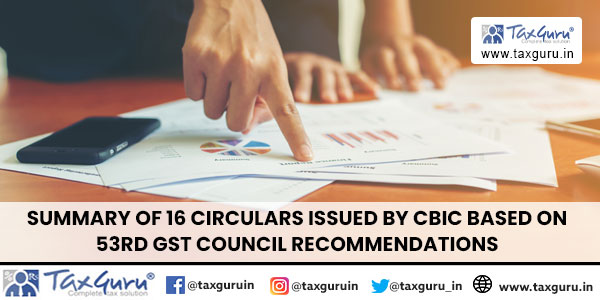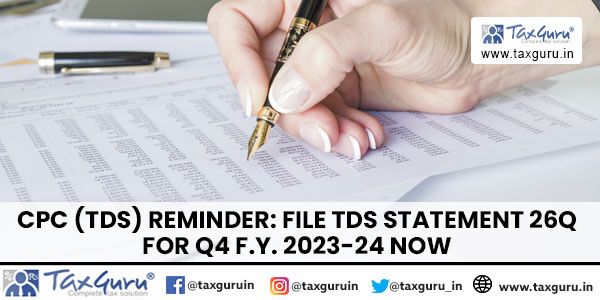This article mainly explains statutory auditor role in audit of ‘Investment and Credit Company – (NBFC-ICC)’ (earlier known as Investment/loan company)and having asset size below 500 crore as defined in Non-Systemically Important Non-Deposit taking (Reserve Bank) Directions, 2016 as per Master Direction NBR.PD.007/03.10.119/2016-17 dated 01.09.2016 updated from time to time.
A. Definitions of Investment and Credit Company:
“Investment and Credit Company – (NBFC-ICC)(Earlier known as Investment/Loan Company)” means any company which is a financial institution carrying on as its principal business – asset finance, the providing of finance whether by making loans or advances or otherwise for any activity other than its own and the acquisition of securities; and is not any other category of NBFC as defined by the Bank in any of its Master Directions.;
B. Major Audit Points
1. NOF Criteria
NBFC ICC has to maintain ₹ 2 croresas the Net Owned Fund (NOF).
For NBFC- MFI criteria are ₹ 5 crore (For NBFC-MFIs registered in the North Eastern Region of the country, the minimum NOF requirement shall stand at ₹ 2 crore). NBFC-Facto NOF criteria is ₹ 5 crore.
How to calculate NOF:
“owned fund” means paid up equity capital, preference shares which are compulsorily convertible into equity, free reserves, balance in share premium account and capital reserves representing surplus arising out of sale proceeds of asset, excluding reserves created by revaluation of asset, as reduced by accumulated loss balance, book value of intangible assets and deferred revenue expenditure, if any;
Net Owned Fund’ is the amount as arrived at above, minus the amount of investments of such company in shares of its subsidiaries, companies in the same group and all other NBFCs and the book value of debentures, bonds, outstanding loans and advances including hire purchase and lease finance made to and deposits with subsidiaries and companies in the same group, to the extent it exceeds 10% of the owned fund.
Detailed tabular format for the working is given in Annex of Statutory Auditors Certificate format laid down in Circular no. DNBS (PPD) CC.No./04/ 66.14.001/2015-16.
Auditor should verify NOF Criteria if it does not fulfil, reporting needs to be done in auditor exceptionreport and Statutory Auditor Certificate (SAC).
2. PBC (Principal Business Criteria)
Auditor has to verify whether company fulfils PBC or not. How to verify PBC is as below.
when a company’s financial assets constitute more than 50 per cent of the total assets and income from financial assets constitute more than 50 per cent of the gross income. The term ‘principal business’ is not defined by the Reserve Bank of India Act. Interestingly, this test is popularly known as 50-50 test and is applied to determine whether or not a company is into financial business and fulfils PBC or not.
The Reserve Bank can penalize NBFCs for violating the provisions of the RBI Act or the directions or orders issued by RBI under RBI Act. The penal action can also result in RBI cancelling the Certificate of Registration issued to the NBFC, or prohibiting them from accepting deposits and alienating their assets or filing a winding up petition.
If the company does not fulfil PBC criteria, Auditor has to report it in SAC and Audit report.
3. Profit to be transferred to Special Reserve Fund
There is requirement of transfer of minimum 20% of the Net Profit to Reserve Fund in terms of requirement of Section 45-IC of the RBI Act, 1934.
4. Standard asset provisioning
NBFC shall make provision for standard assets at 0.25 percent of the outstanding, which shall not be reckoned for arriving at net NPAs. The provision towards standard assets need not be netted from gross advances but shall be shown separately as ‘Contingent Provisions against Standard Assets’ in the balance sheet.
5. NPA Provisioning
Non-Performing Asset (referred in Master Directions as “NPA”) shall mean:
(a) an asset, in respect of which, interest has remained overdue for a period of six months or more;
(b) a term loan inclusive of unpaid interest, when the instalment is overdue for a period of six months or more or on which interest amount remained overdue for a period of six months or more;
(c) a demand or call loan, which remained overdue for a period of six months or more from the date of demand or call or on which interest amount remained overdue for a period of six months or more;
(d) a bill which remains overdue for a period of six months or more;
(e) the interest in respect of a debt or the income on receivables under the head ‘other current assets’ in the nature of short term loans /advances, which facility remained overdue for a period of six months or more;
(f) any dues on account of sale of assets or services rendered or reimbursement of expenses incurred, which remained overdue for a period of six months or more;
(g) the lease rental and hire purchase instalment, which has become overdue for a period of twelve months or more;
(h) in respect of loans, advances and other credit facilities (including bills purchased and discounted), the balance outstanding under the credit facilities (including accrued interest) made available to the same borrower / beneficiary when any of the above credit facilities becomes non-performing asset :
Provided that in the case of lease and hire purchase transactions, an applicable NBFC shall classify each such account on the basis of its record of recovery.
The provisioning requirement in respect of loans, advances and other credit facilities including bills purchased and discounted shall be as under:
a. Loss Assets
The entire asset shall be written off. If the assets are permitted to remain in the books for any reason, 100% of the outstanding shall be provided for;
b. Doubtful Assets
(a) 100% provision to the extent to which the advance is not covered by the realisable value of the security to which the applicable NBFC has a valid recourse shall be made. The realisable value is to be estimated on a realistic basis;
(b) In addition to item (a) above, depending upon the period for which the asset has remained doubtful, provision to the extent of 20% to 50% of the secured portion (i.e. Estimated realisable value of the outstanding) shall be made on the following basis:-
Period for which the asset has been considered as doubtful
Up to one year 20%
One to three years 30%
More than three years 50%
c. Sub-standard assets
A general provision of 10 percent of total outstanding shall be made.
There is some specific requirement for lease and hire purchase assets provisioning as laid down in master circular.
6. Leverage Ratio
The leverage ratio of an applicable NBFC (except NBFC-MFIs and NBFC-IFCs) shall not be more than 7 at any point of time, with effect from March 31, 2015.
In respect of NBFCs primarily engaged in lending against gold jewellery (such loans comprising 50 percent of more of their financial assets) they shall maintain a minimum Tier I capital of 12 percent.
Leverage Ratio” means the total Outside Liabilities/ Owned Funds. The latter can be calculated as explained in point no. 1.
7. Prior Approval of RBI for change in shareholding
There is requirement to take prior permission of RBI for change in shareholding, Management, takeover, acquisition, transfer of control as per NBFC-DNBR (PD) CC. No. 065/03.10.001/2015-16, dated July 09, 2015.
Auditor should verify whether company has taken prior permission as per requirements laid down in circular. If not, deviation needs to be reported in SAC and Audit Report.
C. Statutory Auditor Certificate
All NBFCs are required to submit a certificate from their Statutory Auditors every year to the effect that they continue to engage in the business of NBFI requiring it to hold a CoR under Section 45-IA of the RBI Act. Thereafter, the SAC needs to be scanned and uploaded in COSMOS https://cosmos.rbi.org.in under the menu Upload Returns > Statutory Auditors Certificate. The format of the SAC is as below.
Format of Certificate of the Statutory Auditors’ Certificate (SAC)
(On the letter head of the Statutory Auditors of the company)
We have examined the books of accounts and other records of XXXXX for the Financial Year ending XXXX. On the basis of the information submitted to us, we certify the following:
| Sl. | Particulars | Details |
| 1 | Name of the company | |
| 2 | Certificate of Registration No. | |
| 3 | Registered office Address | |
| 4 | Corporate office Address | |
| 5 | The company has been classifiedby RBI as :
(Investment Company/Loan Company/AFC/NBFC-MFI/ NBFC- Factor/ IFC/ IDF- NBFC) |
|
| 6 | Net Owned Fund (in Rs. Crore)
(Calculation of the same is given in the Annex) |
|
| 7 | Total Assets (in Rs. Crore) | |
| 8
|
Asset-Income pattern:
(in terms of RBI Press Release 1998-99/1269 dated April 8, 1999) a) % of Financial Assets to Total Assets b) % of Financial Income to Gross Income (NBFC-Factor / NBFC-MFI / AFC / IFC may also report separately below) |
|
| 9 | Whether the company was holding any Public Deposits, as on March 31, 20XX?
If Yes, the amount in Rs. Crore |
|
| 10. | Has the company transferred a sum not less than 20% of its Net Profit for the year to Reserve Fund?
(in terms of Sec 45-IC of the RBI Act, 1934). |
|
| 11 | Has the company received any FDI?
If Yes, did the company comply with the minimum capitalization norms for the FDI? |
|
| 12 | If the company is classified as an NBFC-Factor;
a) % of Factoring Assets to Total Assets b) % of Factoring Income to Gross Income |
|
| 13 | If the company is classified as an NBFC-MFI;
% of Qualifying Assets to Net Assets (refer to Notification DNBS.PD.No.234 CGM (US) 2011 dated December 02, 2011) |
|
| 14 | If the company is classified as an AFC;
a) % of Advances given for creation of physical/real assets supporting economic activity to Total Assets b) % of income generated out of these assets to Total Income |
|
| 15 | If the company is classified as an NBFC-IFC % of Infrastructure Loans to Total Assets | |
| 16 | Has there been anytakeover/acquisition of control/ change in shareholding/ Management during the year which required prior approval from RBI?
(please refer to per DNBR (PD) CC. No. 065/03.10.001/2015-16 dated July 09, 2015 on the subject for details) |
In terms of paragraph 2 of Notification No.DNBS.201 /DG (VL)-2008 dated September 18, 2008, a separate report to the Board of Directors of the company has been made.
I have read and understood paragraph 5 of Notification No. DNBS.201 /DG (VL)-2008 dated September 18, 2008.
| Signature and Stamp of the Statutory Auditor:
Date: ____________ |
| Place: ___________ |
Annex
| Capital Funds – Tier I | (Rs. In crore) | ||
| 1. | Paid up Equity Capital | ||
| 2. | Pref. shares to be compulsorily converted into equity | ||
| 3. | Free Reserves: | ||
| a. General Reserve | |||
| b. Share Premium(Security Premium) | |||
| c. Capital Reserves | |||
|
|||
| e. Capital Redemption Reserve | |||
| f. Credit Balance in P&L Account | |||
| g. Other free reserves (may be be specified) | |||
| 4. | Special Reserves | ||
| Total of 1 to 4 | |||
| 5. | Less: i. Accumulated balance of loss | ||
| ii. Deferred Revenue Expenditure | |||
| ii. Deferred Tax Assets (Net) | |||
| iii. Other intangible Assets | |||
| Owned Fund | |||
| 6. | Investment in shares of
(i) Companies in the same group |
||
| (ii) Subsidiaries | |||
| (iii) Wholly Owned Subsidiaries | |||
| (iv) Other NBFCs | |||
| 7. | Book value of debentures, bonds outstanding loans and advances, bills purchased and iscounted(including H.P. and lease finance) made to, and deposits with
(i) Companies in the same group |
||
| (ii) Subsidiaries | |||
| (iii) Wholly Owned Subsidiaries/Joint Ventures Abroad | |||
| 8. | Total of 6 and 7 | ||
| 9. | Amount in item 8 in excess of 10% of Owned Fund | ||
| 10. | Net Owned Fund | ||
D. Additional Report to Board of Director
In addition to the Report made by the auditor under Section 143 of the Companies Act, 2013 or section 227 of the Companies Act, 1956 (Act 1 of 1956) on the accounts of a non-banking financial company examined for every financial year ending, the auditor shall also submit a separate report to the Board of Directors of the Company on the matters specified in paragraphs 3 and 4 below as laid down in Master Direction – Non-Banking Financial Companies Auditor’s Report (Reserve Bank) Directions, 2016 as per Master Direction DNBS. PPD.03/66.15.001/2016-17 dated September 29, 2016.
Material to be included in the Auditor’s report to the Board of Directors
The auditor’s report on the accounts of a non-banking financial company shall include a statement on the following matters, namely: –
(A) In the case of all Non-Banking Financial Companies
i. Conducting Non-Banking Financial Activity without a valid Certificate of Registration (CoR) granted by the Bank is an offence under chapter V of the RBI Act, 1934. Therefore, if the company is engaged in the business of non-banking financial institution as defined in section 45-I (a) of the RBI Act and meeting the Principal Business Criteria (Financial asset/income pattern) as laid down vide the Bank’s press release dated April 08, 1999, and directions issued by DNBR, auditor shall examine whether the company has obtained a Certificate of Registration (CoR) from the Bank.
ii. In case of a company holding CoR issued by the Bank, whether that company is entitled to continue to hold such CoR in terms of its Principal Business Criteria (Financial asset/income pattern) as on March 31 of the applicable year.
iii. Whether the non-banking financial company is meeting the required net owned fund requirement as laid down in Master Direction – Non-Banking Financial Company –Non-Systemically Important Non-Deposit taking Company (Reserve Bank) Directions, 2016 and Master Direction – Non-Banking Financial Company – Systemically Important Non-Deposit taking Company and Deposit taking Company (Reserve Bank) Directions, 2016
(B) In the case of a non-banking financial companies accepting/holding public deposits
It is applicable for companies accepting/holding public deposits.
(C) In the case of a non-banking financial company not accepting public deposits
Apart from the aspects enumerated in (A) above, the auditor shall include a statement on the following matters, namely: –
i. Whether the Board of Directors has passed a resolution for non- acceptance of any public deposits;
ii. Whether the company has accepted any public deposits during the relevant period/year.
iii. Whether the company has complied with the prudential norms relating to income recognition, accounting standards, asset classification and provisioning for bad and doubtful debts as applicable to it in terms of Non-Banking Financial Company – Non-Systemically Important Non-Deposit taking Company (Reserve Bank) Directions, 2016 and Non-Banking Financial Company – Systemically Important Non-Deposit taking Company and Deposit taking Company (Reserve Bank) Directions, 2016;
iv. In respect of Systemically Important Non-deposit taking NBFCs as defined in Non-Banking Financial Company – Systemically Important Non-Deposit taking Company and Deposit taking Company (Reserve Bank) Directions, 2016:
v. Whether the capital adequacy ratio as disclosed in the return submitted to the Bank in form NBS- 7, has been correctly arrived at and whether such ratio is in compliance with the minimum CRAR prescribed by the Bank;
vi. Whether the company has furnished to the Bank the annual statement of capital funds, risk assets/exposures and risk asset ratio (NBS-7) within the stipulated period.
vii. whether the non-banking financial company has been correctly classified as NBFC Micro Finance Institutions (MFI) as defined in the Non-Banking Financial Company – Non-Systemically Important Non-Deposit taking Company (Reserve Bank) Directions, 2016 and Non-Banking Financial Company – Systemically Important Non-Deposit taking Company and Deposit taking Company (Reserve Bank) Directions, 2016
Auditor should state Reasons for unfavourable or qualified statements, Where the auditor is unable to express any opinion on any of the items referred to in paragraph 3 above, his report shall indicate such fact together with reasons therefor.
E. Auditors to submit Exception Report to the Bank
Auditor has to submit exception report containing the details of such unfavourable or qualified statements and/or about the non-compliance, as the case may be, in respect of the company to the concerned Regional Office of the Department of Non-Banking Supervision of the Bank under whose jurisdiction the registered office of the company. such report shall not contain any statement with respect to compliance of any of those provisions.
Disclaimer: This is to inform to readers that the views, thoughts, and opinions expressed in the article belongs solely to the author.It needs to be reviewed on case to case basis.
About Author:
The Author is a young practicing FCA based out at Ahmedabad, Gujarat, India, specialising in NBFC matters. She is also DISA, FAFP and FXTM. Her area of interest includes, amongst others, GST and Writing.
She can be reached on +918879051225 or caswatipanchal@gmail.com






























Jai Shree Krishna, thanks for nice and comprehensive article. Whether there is any requirement for Credit Rationg for such NBFC -ICC Companies pl clarify.